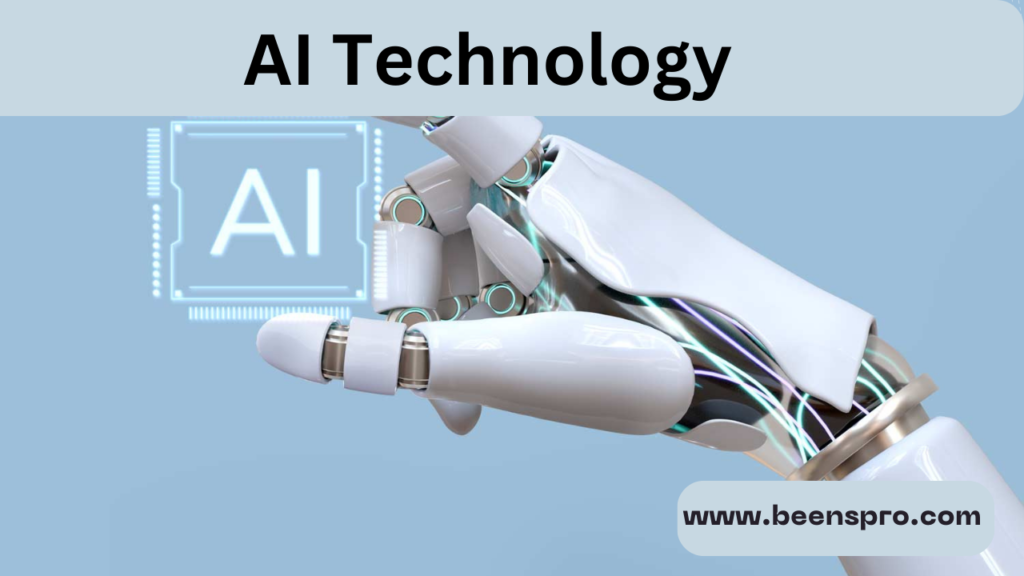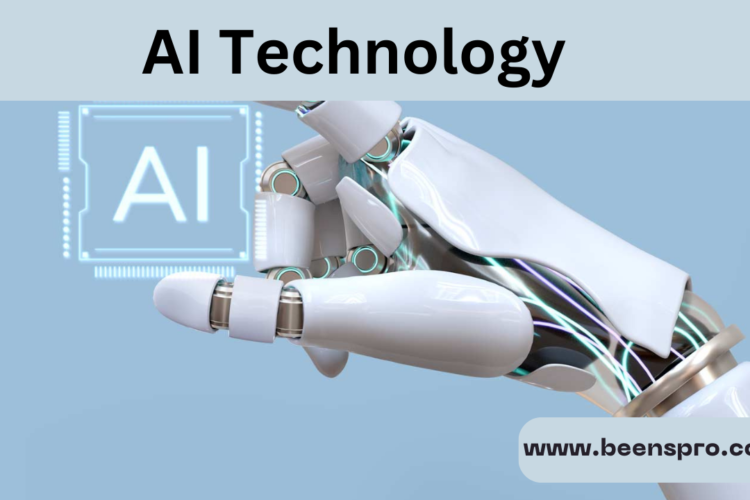
Artificial Intelligence (AI technology) has transformed the way industries operate by enhancing efficiency, automating processes, and improving decision-making. From machine learning to deep learning, AI is driving innovation across multiple sectors. Businesses leverage AI algorithms to analyze massive datasets, extract valuable insights, and create predictive models.
This guide will explore the significance of AI, its core components, applications, and future advancements, ensuring you understand its role in modern technology.
What is AI Technology?
Understanding Artificial Intelligence
AI technology refers to the development of computer systems capable of performing tasks that require human intelligence, such as speech recognition, decision-making, problem-solving, and natural language processing (NLP). It encompasses several subfields, including machine learning, neural networks, cognitive computing, and robotics.
AI enables machines to learn from experience using predictive analytics and AI-powered automation. By processing large volumes of data, AI enhances operational efficiency across industries like healthcare, finance, and business automation.
How AI Works – The Core Mechanisms
To function effectively, AI-powered tools rely on the following core mechanisms:
- Machine Learning (ML): Algorithms that improve automatically through data exposure.
- Deep Learning: A subset of ML that uses multi-layered neural networks for complex pattern recognition.
- NLP (Natural Language Processing): Helps machines understand, interpret, and generate human language for applications like chatbots and AI virtual assistants.
- Reinforcement Learning: AI learns through trial and error to optimize outcomes.
Key Applications of AI Technology Across Industries
The adoption of AI-driven analytics is revolutionizing multiple industries, streamlining operations, and improving accuracy.
AI in Healthcare – Enhancing Medical Diagnosis and Treatment
AI is transforming healthcare by enhancing diagnostics, treatment planning, and operational efficiency. Computer vision helps analyze medical imaging, while predictive analytics improves disease detection.
- AI-powered chatbots assist in patient inquiries, reducing wait times.
- AI decision-making models optimize drug discovery and personalized medicine.
- Natural language processing (NLP) helps analyze patient records for better treatment.
AI in Business – Driving Automation and Productivity
Enhances business operations by improving efficiency, data management, and customer engagement.
- AI-powered tools for marketing and sales automation enhance lead generation.
- Conversational AI improves customer service through AI-driven chatbots.
- AI-driven analytics provide businesses with actionable insights to optimize strategy.
- Intelligent machines handle repetitive tasks, allowing employees to focus on high-value activities.
AI in Robotics and Manufacturing
- AI-driven robotics enhances precision, productivity, and safety in manufacturing.
- Edge computing enables real-time AI processing on factory floors.
- Reinforcement learning optimizes robotic performance in dynamic environments.
How Does AI Improve Everyday Life?
AI technology is embedded in daily activities, from AI chatbots to smart home assistants. Here’s how:
- AI-powered virtual assistants like Siri, Alexa, and Google Assistant help with scheduling and reminders.
- AI-powered automation in smart homes adjusts temperature, lighting, and security settings.
- Speech recognition and sentiment analysis improve digital customer interactions.
AI vs. Machine Learning: What’s the Difference?
Many people use AI and machine learning (ML) interchangeably, but they are distinct concepts:
- AI is the broader concept of machines mimicking human intelligence.
- ML is a subset of AI that focuses on learning from data without explicit programming.
- Deep learning is a more advanced ML technique using neural networks to process complex data.
The Ethics of AI: Challenges and Considerations
While AI offers incredible advantages, ethical concerns like AI bias, transparency, and accountability must be addressed.
- AI systems must be ethically designed to ensure fairness.
- AI decision-making should be transparent to avoid biases in hiring, lending, and legal applications.
- Governments and organizations are working on AI ethics regulations to guide responsible AI deployment.
The Future of AI: What’s Next for Artificial Intelligence?
The future of AI technology includes advancements in cognitive computing, AI-powered automation, and AI in IoT (Internet of Things).
- Transformer models (GPT, BERT, etc.) are evolving to improve language understanding.
- AI predictive models will continue enhancing business forecasting.
- The integration of AI and IoT will drive smart cities and advanced automation.
FAQs
What are the main types of AI technology?
AI is classified into:
- Narrow AI (ANI): Focuses on specific tasks (e.g., chatbots, AI-powered analytics).
- General AI (AGI): Theoretical AI that can perform any intellectual task like a human.
- Super AI (ASI): Future AI that surpasses human intelligence.
How does AI impact job automation and employment?
AI automation enhances productivity but may replace repetitive tasks. However, it also creates new job opportunities in AI development, data science, and robotics.
What industries benefit the most from AI?
Industries such as healthcare, finance, retail, and cybersecurity leverage AI-driven analytics and predictive models to enhance efficiency and security.
Is AI safe to use in business decision-making?
Yes, when AI systems are developed with ethical AI principles, AI decision-making becomes reliable and transparent, minimizing biases and errors.
How will AI evolve in the next decade?
AI technology will advance with developments in quantum computing, AI-powered automation, and AI in IoT, leading to more intelligent machines and enhanced human-AI collaboration.
